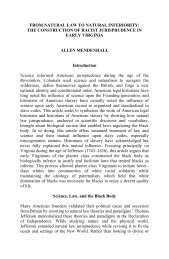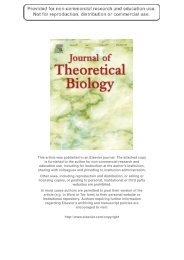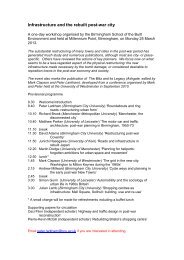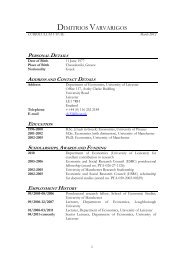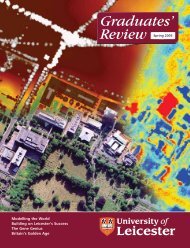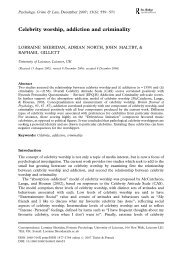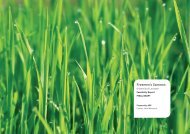Chordotonal Organs of Insects
Chordotonal Organs of Insects
Chordotonal Organs of Insects
You also want an ePaper? Increase the reach of your titles
YUMPU automatically turns print PDFs into web optimized ePapers that Google loves.
L.H. Field & T. Matheson Advances in Insect Physiology 27 (1998) Page 7with increasingly narrower aspects <strong>of</strong> mechanoreceptor roles in insect behaviour (e.g. Bässler,1993; Burrows, 1994). Others have reviewed chordotonal organ ultrastructure (Moulins, 1976),transduction mechanisms (French, 1988), homologies (Boyan, 1993) and the roles <strong>of</strong> tympanalorgans in sound reception and behaviour (Michelsen and Larsen, 1985). In recent years newresearch areas, such as the genetic control <strong>of</strong> chordotonal organ development, have greatlyincreased our knowledge <strong>of</strong> chordotonal organs and their relationships to other sense organs(reviewed for Drosophila by Jan and Jan, 1993). It is timely that this diversity <strong>of</strong> information begathered together and placed into an overall perspective through the present review. We buildon the earlier general reviews <strong>of</strong> chordotonal organs rather than repeat the informationcontained therein.At the time <strong>of</strong> the last major review on chordotonal organs (McIver, 1985) a number <strong>of</strong> aspects<strong>of</strong> the physiology <strong>of</strong> chordotonal organs remained unknown, although they had been posed asmajor research questions since the reviews by Wright (1976) and Moulins (1976). The foremost<strong>of</strong> these problems was the vast gap in knowledge about how a stimulus is applied to thedendrite. The question involves details about (a) the roles <strong>of</strong> scolopidial components intransferring mechanical distortion to the dendrite, (b) the functions <strong>of</strong> differentiated regions inthe cilium, and (c) the differences in mode <strong>of</strong> sensory activation <strong>of</strong> the different scolopale typesfound in chordotonal organs. Initial progress was made on the role <strong>of</strong> the ciliary component(Moran et al. 1977). Another major question asked how different sensory responses are realisedby adjacent chordotonal neurons, which <strong>of</strong>ten are clustered in a group, all receiving the samemechanical stimulus from a common cuticular termination. Differences must be sought in theelectrical properties <strong>of</strong> the excitable membrane and associated transduction mechanisms,mechanical properties <strong>of</strong> the multicellular link between dendrite and stimulus, andultrastructural or molecular differences between scolopidia. Two further questions remained:(1) what is the embryonic derivation and genetic control <strong>of</strong> chordotonal sensilla duringdevelopment, and (2) what are the roles <strong>of</strong> chordotonal organs in the control <strong>of</strong> behaviour?McIver (1985) reviewed the scant literature on these subjects, but only in the past decade has aremarkable boom <strong>of</strong> research taken place to address these questions, and this forms animportant part <strong>of</strong> the present review.2. Histological methods for chordotonal organs in insects2.1 HISTOCHEMICAL STAINING OF FIXED TISSUE2.1.1 Baker-Masson's triple stainYoung (1970) fixed chordotonal organs in alcoholic Bouin's fluid, embedded them in paraffinand stained the 15 µm sections in Baker's modification <strong>of</strong>




